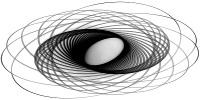C. H. Gao, F. C. Langbein, A. D. Marhall, R. R. Martin, Y. Li, Z. Yang. Partial Approximate Symmetry Detection of Geometric Model. Materials Science Forum, 471-472:702-706, 2004. [DOI:10.4028/0-87849-956-3.702]
Engineering geometric models are often designed to have symmetries and other regularities. In knowledge based reuse, creative design and design for mass customization, to have the information of such symmetries and other regularities from a geometric model is very useful. And this can make us understand more about the geometric model. In reverse engineering, B-rep models are created by fitting surfaces from point sets obtained by scanning an object using a 3D laser scanner. Each fitted surface is determined independently. The reverse engineered object can be improved by imposing these symmetries and other regularities on. This paper discusses the particular problem of finding partial approximate symmetries present in geometric model. A practical algorithm for finding partial approximate symmetries within a 3D B-rep model defined with planes, spheres, cylinders, cones and tori is presented. The experiment results show that the algorithm detects the symmetries expected and can do so reasonably.
![]() This work is licensed under a Creative Commons Attribution-NonCommercial-ShareAlike 4.0 International License.
This work is licensed under a Creative Commons Attribution-NonCommercial-ShareAlike 4.0 International License.
